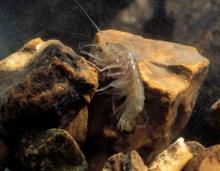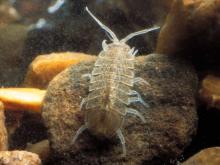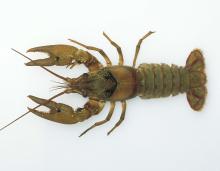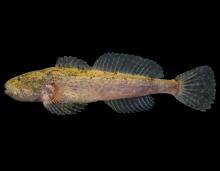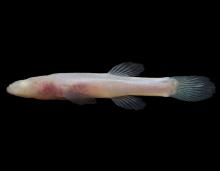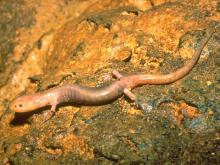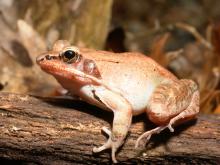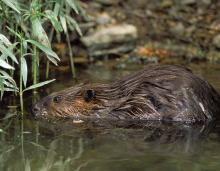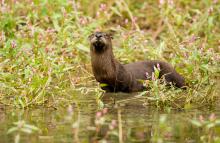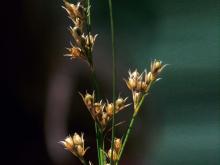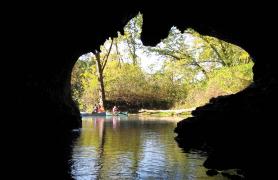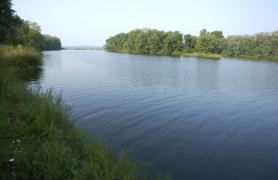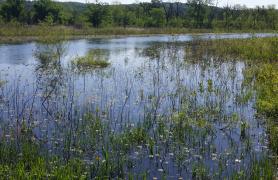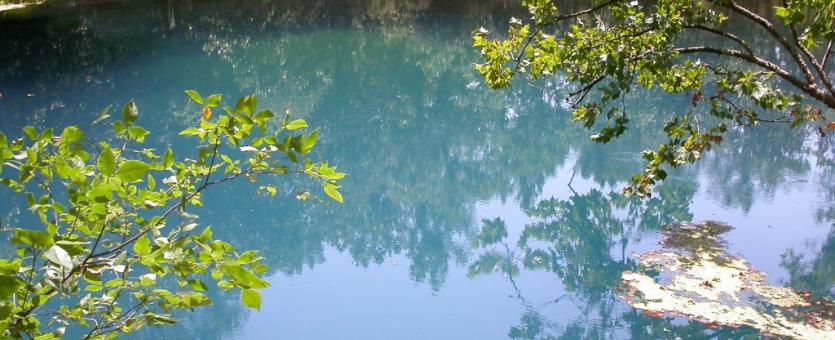
Springs, along with caves, sinkholes, and natural bridges, are all features of karst regions. Much of Missouri is a karst landscape of porous limestone and dolomite with deep fissures.
Springs Are Part Of The Karst Cycle
Slightly acidic groundwater flows through cracks in limestone or dolomite, slowly dissolving the rock. The cracks widen to form cavities and eventually a subterranean drainage system.
When a cave is below the water table, it is filled entirely with water. (Well-drillers search for these water-filled pockets.) When the cave is above the water table, the cave has air in it and its water flows ever downward. Wherever underground water exits the rock and flows into the open air, it is called a spring. Spring water can discharge from the ground due to gravity or hydrostatic pressure (the pressure exerted by standing water).
Some of our largest caves formed ages ago as completely water-filled cavities. Over geologic time, the Ozark Plateau was uplifted, and rivers carved valleys ever deeper into the bedrock, creating bluffs and causing cave passages to be above the water table and to drain.
All the land through which water moves into groundwater or into springs or caves is called a recharge area. For a single cave system, this area can be many miles wide. Pollutants, such as agricultural chemicals and animal waste, roadway runoff, leaking septic tanks, contaminants from trash thrown into sinkholes, and even excess silt from a variety of construction and agricultural earthworks, can seep into the groundwater, polluting caves, springs, and well water.
Human Connections
In the days before refrigerators were available, springs and caves, which are always about 55F, were prized locations for cold storage of food and beverages.
Few people are aware of it today, but between 1800 and 1930, our mineral springs, and at least 80 resorts and spas that developed around them, drew hundreds of thousands of visitors to Missouri seeking “healing waters.” Our earliest settlers, notably Nathan Boone, boiled the water from natural salt springs to yield the salt necessary for frontier survival.
Spring Subtypes
There are many ways of categorizing springs, but it’s helpful to think of the following divisions.
Seeps
Some springs are the merest trickle, and they produce wetland communities called seeps. Here, soils are saturated with groundwater that wells up through layers of mucky soil. Because the water discharge is so diffused and flows so slowly, you might not even recognize it as a kind of spring.
Seep communities are roughly divided, by their water chemistry, into acid seeps, calcareous seeps (including fens), and saline seeps.
Underground Streams
What we usually think of as “springs” are underground streams, which are usually associated with aquatic caves. Some produce just a trickle of water, but the largest can churn out hundreds of millions of gallons each day. As with seeps, the water produced by an underground stream can be fresh or mineralized or salty.
In the Ozarks, springs often appear as a crevice or opening in a rock wall, where water flows out. Much of the clarity and coolness of Ozark streams comes from spring water that feeds into them.
Missouri’s large, cool, aqua-blue springs are a source of wonder — and tourism revenue — for our state. Some of our most beautiful rivers and float streams are spring fed.
- The water that pools around a spring often appears blue because of the depth of the water and the way the minerals in the water reflect the light shining on it.
- Spring water is cold (about 56F) because that is the constant temperature of the ground deep beneath the surface.
- Although spring water might seem safe to drink, it is not: Any pollution entering the ground for perhaps miles around the spring may be in the water, along with viruses, bacteria, and other microbes that can cause illness. You should treat it as you would any other creek water.
While seeps can be regarded as terrestrial wetland communities, flowing springs are viewed as aquatic habitats similar to creeks and streams, with plants that grow underwater, partially out of water, or on the banks. Where springs flow into streams and rivers, their cool, clear, well-oxygenated water creates a special habitat inhabited by a unique community of plants and animals: certain ferns, watercress, gilled aquatic snails, isopods, crayfish, salamanders, sculpins, and more. Trout, which are coldwater fish, can be successfully stocked in some spring-fed Ozark streams because of the springs’ cooling influence on the water.
Because many springs are associated with caves, many aquatic cave-dwelling animals appear where the caves open into springs, especially after heavy rains or floods.
Nearly 4,000 springs have been officially mapped in Missouri (so far). The majority are in the southern half of Missouri, mostly in the Ozark Highlands ecoregion, where they occur in soluble dolomite or limestone.
The largest and most spectacular springs are on public land as Missouri State Parks or Conservation Areas. Many smaller springs occur on private land, too, and are not open to the public.


Key species


